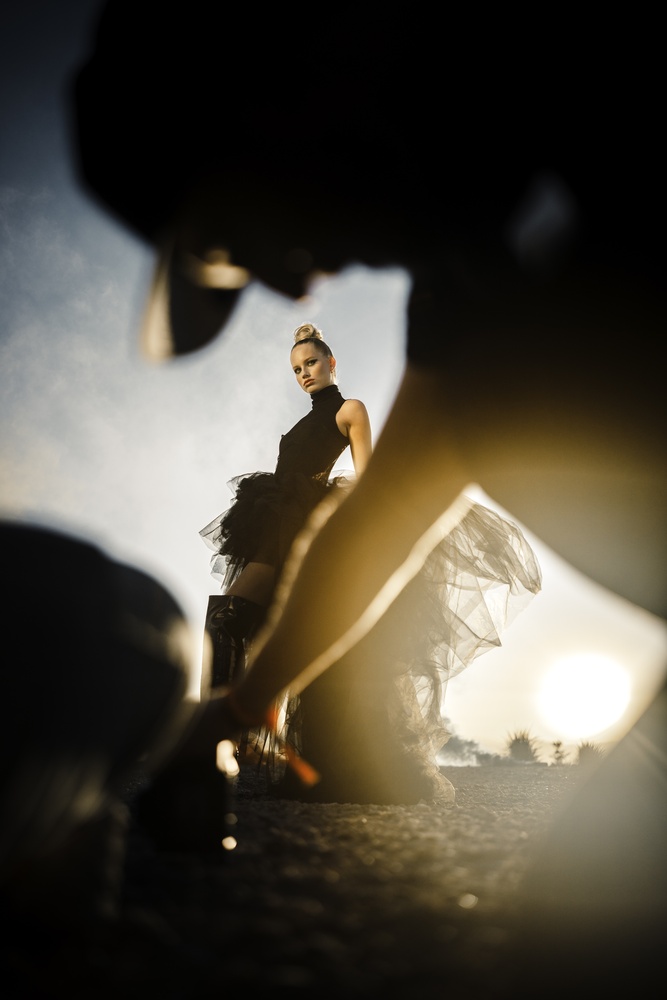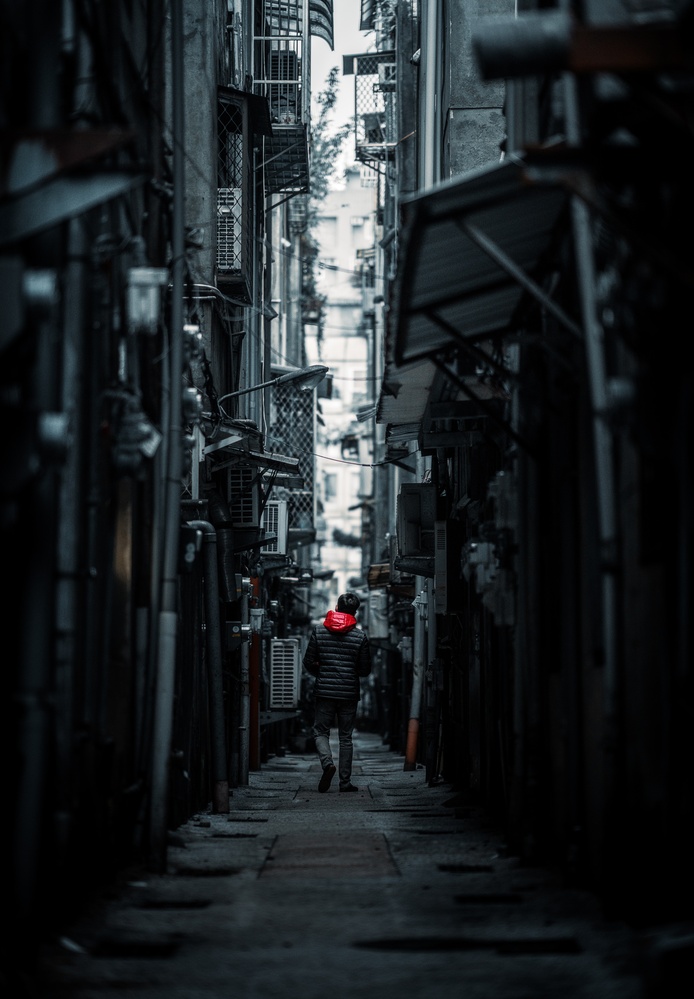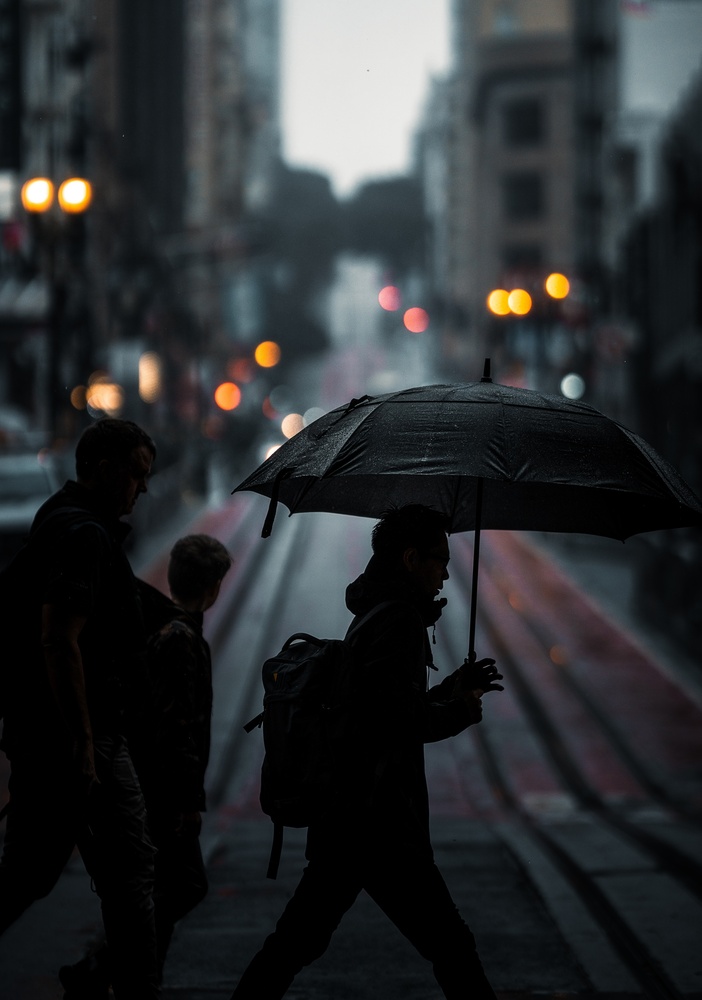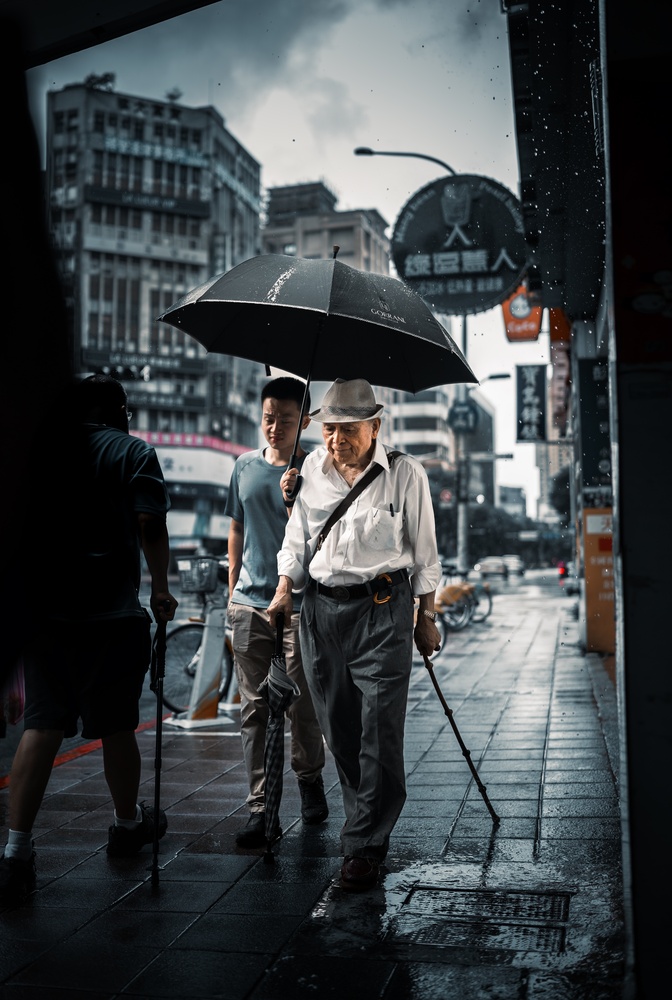Sony Kando 2023
I recently had the honor and pleasure of attending Sony Kando in Snowbird, Utah. Kando is an incredible creative experience that Sony hosts every year, bringing together some of the most talented creatives in the industry.
While at Kando, I ran into some amazing creatives and was lucky enough to interview a few of them.

Marion Mou is a freelance photographer whose side hobby is street photography. I’ve been admiring his work for a while and was super excited to have an opportunity to interview him at Kando.
Marion's cinematic street photography and unique style has garnered over 106K followers on Instagram. I really love his moody style, which he describes as "scenes from a movie, or comic book."
Our Kando interview gives valuable insight into Marion's creative workflow and how he pushes his creative skills to the limit. It's filled with amazing advice that can be applied to other genres of photography, but is especially useful for those of us who are wanting to level up our street photography techniques.

Some of the street photography tips that Marion shares include:
- How to look for emotion in your images
- Why you shouldn't overthink things
- How to choose your gear for street photography
- What to expect when you’re out in the field
There are many more valuable tips that Marion shares in the interview, so check out the edited transcript and the full video interview below.
The Interview
Marion: My name is Marion Mou, and I'm a freelance photographer. I've shot a handful of weddings in the past couple of years and it's been a good experience. I do a lot of family sessions, maternity, engagement shoots, and even album covers for certain artists. This has been my profession for the past three years since COVID started. On the side, my passion is shooting street photography. That's what I love to do.

Reza: I think that's how I got to know you. I saw one of your images, and I was like, "dang, that's a banger."
Marion: That's too kind of you, man.
Reza: And then we met in San Francisco, right, at the community event for the a6700? I'm a huge fan of your work. Your street photography is beautiful, and I was curious, you know, I wanted to know how you think through it.
Marion: You know, to be honest, you just gotta go out there and shoot. I don't think about compositions. I look for other things, like the way a person dresses, or how they walk. Something about a specific person on the street usually grabs my attention, and then I just go find my way over there and take a photo of them. It's usually candid, so I try not to be seen, but sometimes when you get that good eye contact, it definitely brings out a different kind of feel for the photo.
 Reza: Nice, so you have that connection, you know, with the image that you're taking?
Reza: Nice, so you have that connection, you know, with the image that you're taking?
Marion: Yes, it's usually not a friendly one, but I'll take it, because an emotion is an emotion.
Reza: That's what you want to convey with your imagery, right? Like a feeling.
Marion: Yes, a certain type of mood per se.
Reza: So, when you're out, what's your process like, your workflow? Do you just decide you want to shoot a certain subject or a certain camera, or how do you work through that?
Marion: Yeah, so usually, the night before I go out to shoot, I'll line up two lenses. The next day, when I wake up, whichever lens that I feel like shooting, I'll just grab that one and shoot the entire session with that one lens. It's usually a prime lens, and I shoot the whole entire session with that one prime lens. It forces me to find different angles and push my skills to the limit.

Reza: Nice, so it's a good way to self-motivate, right?
Marion: Absolutely, it forces you to be more creative when taking photos of the subject. You gotta find more sneaky ways to get closer to strangers without freaking them out, because you never know how they'll react if they feel like you're stalking them.
Reza: Yeah, so there's an element of being discrete, and there’s also an element of staying inspired, right?
Marion: Yes, you're absolutely correct.
Reza: It goes both ways. You have the right tool for the job, but then you're also helping yourself by not becoming bored of seeing the same thing.
Marion: Yes, it definitely keeps it super, super interesting, because you challenge yourself. You’re usually shooting from the hip, or you're putting the camera down at a certain angle, just hoping that you get a good frame, and then after a while you get used to it, and then it becomes like a new achievement unlocked, that you don't even really have to look at the viewfinder to shoot anymore.

Reza: So, you kind of get a feel for the types of images you're going to be able to expect if you're shooting on a certain lens, right?
Marion: Exactly.
Reza: What kind of advice would you give someone that's just starting out in street photography?
Marion: Most of the questions that I get are about how to go out and just take photos of strangers. A lot of people tell me that they're super nervous. They don't want to get caught. They don't know what to do when someone approaches them and says, oh, why did you take my photo? They don't wanna be confronted by a stranger, you know? I think for most people, taking photos of a stranger is not really a natural feeling, because they feel like they're invading someone’s sense of privacy, but just so you know, it is legal to take photos of people on public property.
When it comes down to it, there’s no other way but to just go out and do it. I went out there and did it. I felt uncomfortable for a long time. I even still feel uncomfortable when I go out and shoot right now, but that all goes away after 10 minutes. Once you get the warm-up, you're good to go, and you’re on a roll.
Reza: So basically, don't overthink it, right?

Marion: Don't overthink, just do it. If you see something, just take a photo. Gradually, you'll develop the courage to get closer and closer to your subject. If you're feeling uncomfortable, you can always shoot with a longer lens, such as an 85mm or 135mm prime. They're usually really fast, and you get really good depth of field, and they're super crispy.
Reza: Nice, we have some amazing advice there. Don’t overthink, go out and just actually shoot until you're in the zone and feeling comfortable.
Marion: If you're a little timid, a little shy, it's okay. Get the big lens.
Reza: There's also an element of respect and discreetness, right? You're not out there sticking your lens in someone's face.
Marion: Oh, absolutely not. Most of the time, you don't really want to be noticed, but you can't expect to never not be noticed. Just try your best. Get the candid shots. What you see from me are like scenes from a comic book or a scene from an immersive movie, like a candid moment of life.
Reza: So like each image is a story in and of itself?
Marion: Well, hopefully that's what you guys feel when you see my photos. I would say that's the goal.

The Video
Check out my full video interview at Sony Kando with Marion Mou below:
Images used with permission of Marion Mou.







I'm generally not a fan of extensive color manipulation in photography, except when it serves a specific purpose, such as creating scenes that diverge significantly from reality.
I'm finding there are some great street photographers who's photos would be so much better if they didn't follow the irritating orange and teal trend but just went with more natural colours.
I was just thinking the same thing about film. Add an orange and teal LUT and call it "Cinematic"?
Pretty much looks like what so many others are and have been doing. Never was a fan of that heavily manipulated color look
I like a lot, especially the first pic. To me there is just a little too much blue/cyan cast in the highlights, particularly on buildings.
First of all I like that unlike so many street photographers he is not afraid of showing people's faces. It seems like 90% of the street photography is the backs of heads...
As far as the color, it might a bit much bit it adds a mood that becomes another facet of the creative process.
There are limits to color manipulation and it comes down to honest photographic sense, but it can be limitless depending on where you profess